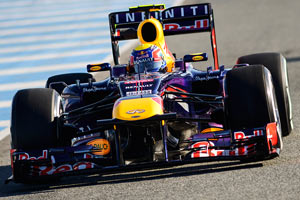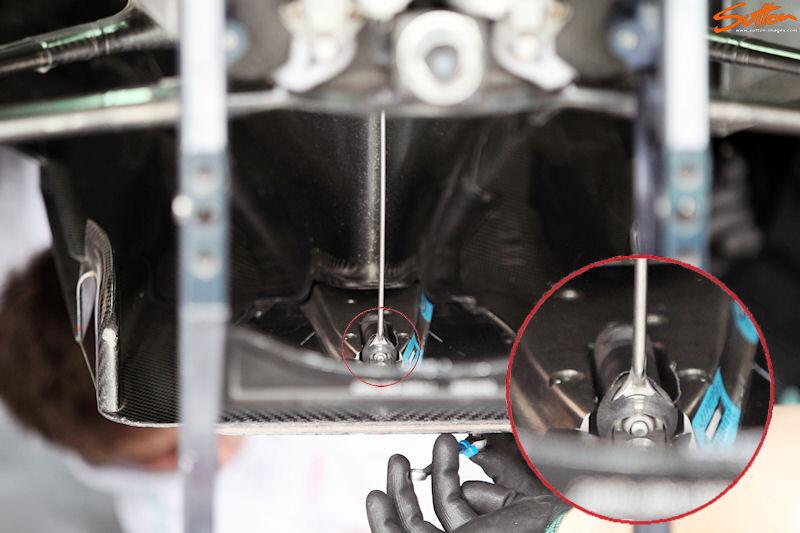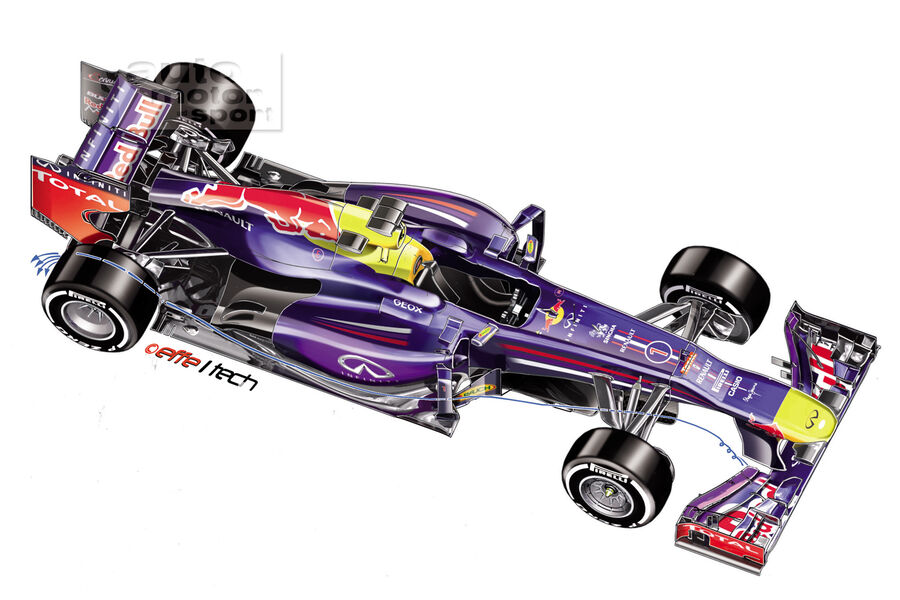gary123 wrote:http://www.omnicorse.it/img/articoli/ev ... _tray_.jpg
Here's what was hiding in the Red Bull Racing T-Tray!
It is a "boomerang" carbon able to move the splitter with a programmed deformation
The secret was , but it was kept cleverly hidden throughout the season . Here's the design Effe 1 Tech Red Bull Racing that shows the detail that probably allowed the T -Tray of RB9 to rise to the top when the vertical load was applied to the splitter that was more than 200 kg . We say it now: This solution has been declared legal by the FIA scrutineers that have occurred in the course of the 2013 season , why not broke any rules of the regulation, although perhaps not respected the spirit .
BOOMERANG CARBON What is it ? Of a sort of " boomerang " realized in composite materials that has been mounted between the skid -block and the T -Tray . Other teams at that point have adopted springs much easier because the bottom resist to audits by the FIA ( the maximum deflection of 5 mm with a load of 200 kg occurred at three points ) and avoided the " table " (which is no longer wood ) would break violently rubbing in the passage on the curbs .
HOW TO RAISE THE " NOSE " What was the point of the car multiple world champion kept an eye on throughout the season , because only by lifting the " beak " , while the car was moving , it was possible to obtain the lower ride height the splitter without ruining the skid -block on the asphalt ( the excessive consumption of the table, in fact, result in a disqualification ) .
THERE 'S ALSO SET- RAKE Thanks to Frick was possible to adopt the attitude beat ( the British call Rake ) with the front wing that almost touched the ground, while the latter was higher than 80 mm to increase the volume air in the loudspeaker that was sealed to the sides from the " miniskirt thermal " fruit of the effect of the exhaust blower .
A LOT OF SPECULATION IN THE YEAR During the world have made a lot of speculation about how Adrian Newey could deflect the T -Tray according to a programmed deformation and studied with care the CFD . There has been talk of a mysterious mass damper effect and those who supported the existence of materials that could become deformed due to the heat. The shooting of a thermal imaging camera of the FIA, in fact, had shown that the splitter right in the RB9 a high temperature that is generated could allow the rod that connects the T -Tray to the body from collapsing , stretching , but without recording the expected consumption of the " shoe " which, however, would have justified the unusual increase of heat to the constant rubbing on the track.
THE THEORY OF GARY ANDERSON The theory put forth by Gary Anderson , a former dt of Jordan , was deemed credible by the technicians of the FIA who proceeded to check out the Grand Prix of India if the T -Tray Red Bull Racing suffer a deformation once the rod was heated by a heat source , while it was subjected to the load provided by the legislature . It , however, did not happen nothing , leaving everyone stunned , because they promptly removed the doubts about legality of RB9 .
CLICK THE MYSTERIOUS At the last GP of Brazil, however , the piece that has remained " bundled " between the T -Tray and the skid block of Red Bull Racing was caught by a photographer who captured the moment in which decreased attention to the mechanics of Milton Keynes. And the massive " crossbow " carbon has not gone unnoticed : it is a particularly sizeable who is openly at odds with the style of Adrian Newey design , a fanatic of miniaturization of the individual elements of the car and that is always looking for maximum savings weight. In short, in F1 does not mount anything that does not have a direct effect on performance.
THE CROSSBOW RAISE THE FIRST PART OF THE SKID BLOCK ? What is the " spring " in carbon ? As a premise, it must be said that the " table" which is the bottom of the keel of the car must not be in one piece , but you can divide it into three parts. This choice was made to save rightly : you only replace the piece that shows the damage crawling on the curbs . The first piece , the one that includes the splitter must be at least 1000 mm . Adrian Newey seems to be able to rotate it by a few millimeters upwards in the front thanks to boomerang in composite materials that acts just like a spring but with little load. As you can see in the image that we publish the crossbow in about half the carbon is held by an interesting mounting system that allows a decrease determined before nailed . Indeed, to be more precise, it would perhaps be better to define the movement of the first piece of the skid block as a small rotation upwards.
THERE ARE OTHER SECRETS IN RB9 ? Interestingly , over all'arcuatura boomerang , also the delta shape of the front part : the English genius , in fact , is able to distribute the load over the entire width of the splitter , avoiding the deformations that could be generated by acting only in a point in this way we obtain a stability in the movement of the T -Tray enviable in the nerve-center of the car. It must be said that between the table and the bottom of the Red Bull Racing has entered a "skin" of a couple of millimeters that seems to kevlar. It may be helpful to close all the holes or as a thermal insulator. I wonder if it's all here and there 's still more hidden in RB9 ? Devil of a Newey ...
Source:
http://www.omnicorse.it/magazine/33275/ ... nel-t-tray
I translated with google translator I hope it is good

Here omnicorse explains the secret of the T-tray of the RB9.










